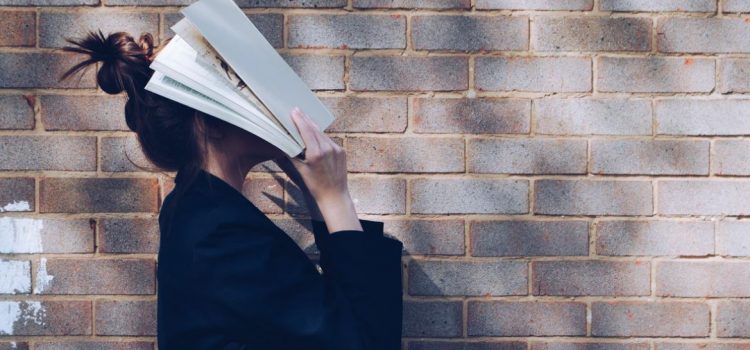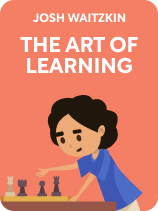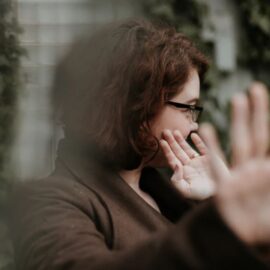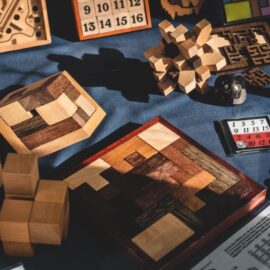

This article is an excerpt from the Shortform book guide to "The Art of Learning" by Josh Waitzkin. Shortform has the world's best summaries and analyses of books you should be reading.
Like this article? Sign up for a free trial here .
Is Josh Waitzkin’s The Art of Learning worth reading? What is Josh Waitzkin’s philosophy on learning?
In The Art of Learning, chess prodigy and tai chi World Champion Josh Waitzkin outlines his philosophy on learning, skill mastery, and competition. Waitzkin builds from basic to advanced strategies for both the psychological and technical sides of skill-building, showing that your growth as a competitor parallels your growth as an individual.
Below is our The Art of Learning review, including background, context, and critical reception.
About the Author
Joshua Waitzkin is an International Master in chess and World Champion in Tai Chi Push Hands, the combative variant of tai chi. A chess prodigy, he began playing at the age of 6, drawn to the streetside boards set up by New York City park hustlers. Soon after, Bruce Pandolfini, a prominent chess coach, took Waitzkin on as a student. Waitzkin went on to win several national championships in his early teens, becoming a National Master at 13 years old and an International Master at 16.
Waitzkin shifted away from chess in his late teens, as fame and coaching methods conflicted with his well-being. Soon after, he began to study tai chi under master William C. C. Chen, who later invited Waitzkin to study Push Hands. Through his twenties, he rose through the US tournament rankings and went on to win the World Championship in Taiwan in 2004.
Today, Waitzkin runs the JW Foundation, a nonprofit that fosters a love of learning in children. He also trains in Brazilian Jiu-Jitsu and acts as an ambassador for the Chessmaster video game series.
Connect with Waitzkin:
The Book’s Publication
The Art of Learning, originally published by Simon & Schuster in 2008, is Waitzkin’s second book. His first, Josh Waitzkin’s Attacking Chess, explains his approach to chess in detail, while The Art of Learning explores his approach to all learning in a memoir-esque format.
Historical Context
Waitzkin published this book in 2008, around nine years after he stopped playing chess and three years after he became Push Hands World Champion. The height of his fame came around 15 years earlier, when “Searching for Bobby Fischer” hit theaters in 1993.
Based on a book written by Waitzkin’s father, “Searching for Bobby Fischer” contrasted Waitzkin’s chess trajectory with that of Bobby Fischer—America’s earlier chess darling, who defeated Boris Spassky in the 1972 World Championship against the former Soviet Union. The film explores how the Waitzkins find a healthy relationship with chess given Josh’s precociousness, in contrast to the monomaniacal focus characteristic of chess geniuses like Fischer.
Fischer disappeared following his victory, taking the chess world’s zeitgeist with him. Two decades later, some thought that Waitzkin would be his successor—a young genius who could rekindle America’s passion for chess. He didn’t reach the same heights as Fischer, but Waitzkin became a household name in the chess world, and he remains known for his uniquely aggressive, chaotic style.
Intellectual Context
The Art of Learning’s publication in 2008 dovetailed with rising interest in life optimization, a trend also fueled by Tim Ferriss’s The 4-Hour Workweek (2007). Waitzkin’s methods fit within this subculture’s focus on self-optimization, biohacking, the “quantified self” and “meta skills” (like learning how to learn).
Waitzkin has been a guest on Tim Ferriss’s podcast five times, and regularly speaks on topics such as how to learn more efficiently, how to achieve excellence, and how to train your mind for optimal performance in life and competition. Today, Waitzkin trains performance-focused individuals in the finance, investment, and environmental impact sectors, working with psychologist Dr. Leah Lagos to provide personalized guidance based on biometrics and Waitzkin’s unique expertise.
Waitzkin also cites Robert Pirsig, author of Zen and the Art of Motorcycle Maintenance, as a major influence. Waitzkin follows Pirsig’s style of blending memoir, philosophy, and inquiry into how to live well. Drawing from the Tao Te Ching, Waitzkin also continues the modern tradition of synthesizing Eastern and Western ideas into a more holistic perspective—in his case, on the topic of learning and growth.
Critical Reception
Many online reviews of The Art of Learning praise the book for presenting an actionable approach to learning, from the basics to high-level tactics. In particular, online reviewers appreciate that Waitzkin is that rare top performer who’s also able to explain how he did it. Readers cite his clear explanations of high-level principles, and they enjoy the detailed examples of his techniques. Many also appreciate the opportunity to get inside the head of a world-class competitor.
Online reviewers who find fault with the book complain that it’s too autobiographical and doesn’t explain Waitzkin’s method thoroughly enough. Some argue that he gives too few examples beyond chess and tai chi, so it’s not clear how you’d apply his methods to learning other skills. Others find his explanations too abstract and his ideas “fuzzy” and “mystical” rather than concrete and empirical.
Commentary on the Book’s Approach
The Art of Learning draws from psychologist Carol Dweck’s growth mindset research, reiterating the “trial and error” approach to improvement. Through the early and middling principles of his approach, Waitzkin offers familiar perspectives on pushing through adversity, studying the basics, and leveraging automaticity—the brain’s ability to integrate and navigate complex networks of skills—to learn faster, many of which feature in similar books in the “how to learn” subgenre of self-help.
On the other hand, Waitzkin speaks from hard-earned experience and measurable success, so his words resonate more than a theoretical explanation of the same concepts. His ideas about the role of artistry and self-expression in learning feel fresh, and he discusses high-end competitive tactics that are unique to his approach.
Commentary on the Book’s Organization
The Art of Learning follows Waitzkin’s life, unfolding through three parts:
- He first details his early years as a chess prodigy and explains the foundations of his approach.
- Second comes his transition from chess to tai chi, and how he adapted to a physical skill after years of mental training.
- Waitzkin finishes by discussing the high-level learning strategies he developed when training for the 2004 Chung Hwa Cup.
The order of the principles generally follows the chronological flow of the book, from basic to advanced techniques. Waitzkin often loops back to earlier ideas, sometimes building on them or simply reiterating them.

———End of Preview———
Like what you just read? Read the rest of the world's best book summary and analysis of Josh Waitzkin's "The Art of Learning" at Shortform .
Here's what you'll find in our full The Art of Learning summary :
- Life advice from chess prodigy and tai chi World Champion Josh Waitzkin
- Detailed looks at the psychological and technical sides of skill-building
- How to build any skill from the bottom-up






